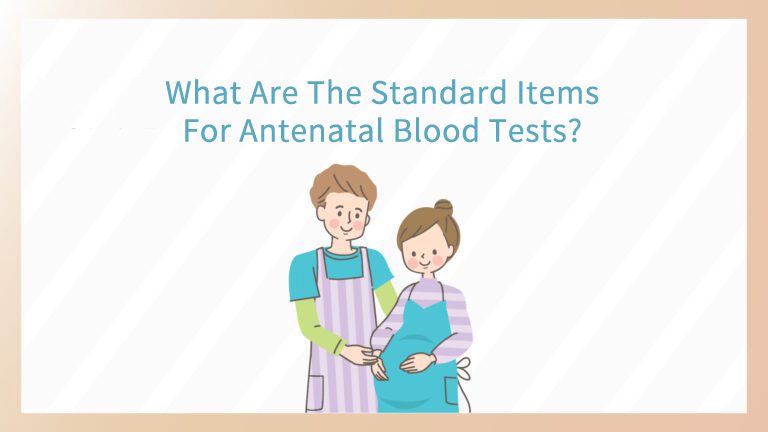卵巢儲備、功能及生育力小測試 立即測試...
“My doctor said my uterus aged 40-year-old now.” Many women wonder how we can tell how old the uterus is. In fact, we cannot tell the age of the uterus BUT we can check your ovarian reserve or “age of the ovary”. Firstly, there is no such thing as age of the uterus or womb. […]...
Uterine fibroids are benign (non-cancerous) growths of the uterus. They affect as much as 30% of women. Fibroids range in size from seedlings to bulky masses that can distort and enlarge the uterus. They can appear in single or multiples. Causes Why some women develop uterine fibroids remain ...
Endometriosis is the growth of endometrial tissue (lining of the womb) outside the womb. 2-10% women of reproductive age have endometriosis and it may be seen in up to 50% of infertile women. It occurs mostly in the pelvic region including the ovaries and the surface of the womb. If it happens insid...
The menopause is when a woman stops having periods. It happens when the ovaries stop releasing eggs and estrogen hormone, or the ovaries have been removed. Most Chinese women have the menopause between 45 to 55 years, with the average age being 51 years. However, menopause can occur earlier in some ...
1.Haemoglobin A haemoglobin test can tell if a person has anaemia. If the haemoglobin level is low, the person needs other tests to identify the cause and the type of anaemia, and to see whether treatment is necessary. 2. Thalassaemia Thalassaemia is a hereditary type of anaemia. Around 8% of...
If a woman loses her baby in the first 3 months of pregnancy, it is called an early miscarriage. Most women experience vaginal bleeding but sometimes there may be no symptoms. If this is the case, the miscarriage may be diagnosed by an ultrasound scan. What causes miscarriage? The most common cause ...
General Advice for the Couple Couples are advised to have regular sexual intercourse around 2 to 3 times a week. With regular sexual activity, the likelihood of seizing the optimal time for conception at around the time of ovulation is very much increased. Daily monitoring of the woman’s basal bod...
What are carrier screening and expanded carrier screening? When a woman is pregnant or planning to become pregnant, the woman wants everything to go right. While most babies are born healthy, with every pregnancy there is a small chance of having a baby with a genetic disorder. With carrier screenin...
Indication(s): Infertility; Known risk factors for tubal blockage e.g. endometriosis, history of pelvic infection, history of pelvic or abdominal surgeries. The Procedure: No anaesthesia is required. If you are worried about pain, you may take 2 tablets of paracetamol an hour before the proc...
A hysterosalpingogram (HSG) is a fertility test to determine if the fallopian tubes are open or blocked, and whether a blockage is located at the junction of the tube and uterus (proximal) or whether it is at the other end of the fallopian tube (distal). The uterine cavity is also evaluated for the ...
What is Conventional IVF ? Conventional IVF is a process by which the sperms and eggs are mixed together, and the sperms penetrate the eggs by themselves. This insemination method is suitable for couples with adequate active and normal sperms. However, a small percentage of couples (<5%) may have...
When are embryos transferred back to the womb? Embryos can be transferred back to the womb at 2 different stages of their development: 1) cleavage stage embryos on Day 2 or Day 3 of their development, 2) blastocyst stage embryos on Day 5 of their development. What is the difference between blastocys...
Pre-implantation Genetic Testing (PGT) is a technique used alongside IVF to check if the embryos created in an IVF cycle have abnormalities in their chromosomes or genes, before transferring them back into the womb. Couples who are known to have abnormalities either in the chromosomes or in the gene...
What is PGT-A? Pre-implantation Genetic Testing for Aneuploidies (PGT-A), previously called Pre-implantation Genetic Screening (PGS), is a technique used alongside IVF for testing whether embryos have problems with the number of their chromosomes, because transferring an embryo with an incorrect num...
What is PGT and PGT-SR? Pre-implantation Genetic Testing (PGT), previously known as Pre-implantation Genetic Diagnosis (PGD), is a technique used alongside IVF by couples who have a particular inherited condition to avoid passing it on to their children. Pre-implantation Genetic Testing for Chromoso...
What is PGT and PGT-M? Pre-implantation Genetic Testing (PGT), previously known as Pre-implantation Genetic Diagnosis (PGD), is a technique used alongside IVF by couples who have a particular inherited condition to avoid passing it on to their children. Pre-implantation Genetic Testing for Monogenic...
What is assisted hatching? The developing embryo is normally surrounded by a protective shell called the zona pullucida. The embryo naturally breaks out of this shell before it can implant in the womb. If the shell is too thick or too hard, it will be difficult for the embryo to hatch. Assisted hatc...
1.Haemoglobin A haemoglobin test can tell if a person has anaemia. If the haemoglobin level is low, the person needs other tests to identify the cause and the type of anaemia, and to see whether treatment is necessary. 2. Thalassaemia Thalassaemia is a hereditary type of anaemia. Around 8% of the po...
Pregnant women shall pay special attention to their diet, not only to promote the health of themselves and their babies, but also to make sure no complications occur. Chinese tradition dictates many limitations concerning the diet of pregnant women. This article shall discuss these dietary concerns ...
What is Down Syndrome? Down Syndrome is one of the commonest chromosome disorders, caused by the presence of an extra chromosome 21 (Trisomy 21) in each cell. Affected individuals are characterized by distinctive facial features and mental retardation. There may also be other structural defects, suc...
SafeT21expressTM is designed to screen for Fetal Chromosomal Aneuploidies caused by Trisomies, Sex Chromosome Aneuploidies and Microdeletions with a minimum size of 3Mb. The test utilizes Next Generation Sequencing followed by bioinformatics analysis on both maternal DNA and cell free placental DNA ...
What is fetal morphology scan? A fetal morphology scan aims to carry out a thorough check of the structures of the fetus. Most babies are normal and the parents can be reassured with the normal ultrasound findings. In case a baby has some structural defects, it might be important to find out before ...
What is HPV? Human papillomaviruses (HPV) are a very common family of viruses that infect epithelial tissue of males and females. More than 150 HPV types have been identified. Most HPV types cause common warts on the hands and feet. Approximately 40 HPV types can infect cells on the genitals, mouth ...
An ectopic pregnancy is a pregnancy that grows outside the uterine cavity (womb) instead of inside the uterine cavity. Most ectopic pregnancies develop in the fallopian tubes, but rarely they can occur in other places such as the ovaries, the cervix or abdominal cavity. Around 1-2% of all pregnancie...
Sometimes a pregnancy will need to be terminated for various reasons. According to the law in Hong Kong, a pregnancy can be terminated before 24 weeks under the following conditions: 1) If continuation of pregnancy would involve risk to the life, physical or mental health of the pregnant woman great...
Rubella is also known as ‘German Measles’. It is an infectious disease caused by Rubella virus. It can be transmitted by contact with secretions from nose and pharynx of infected persons through droplet spread or direct contact with patients. Symptoms are usually mild, including fever, headache,...
Chickenpox is a very contagious disease caused by the Varicella-zoster virus (VZV). It is spread by breathing in droplets from infected people that get into the air when they cough or sneeze, or touching the virus particles from chickenpox blisters. People who have never had the disease or been vacc...
What is Pertussis? Pertussis is a highly contagious respiratory infection spread by droplets when an infected person coughs or sneezes, or via direct contact with respiratory secretions of the infected. The disease affects people of all ages, and infant who are too young to be vaccinated are most vu...
What is Hepatitis B? Hepatitis B is a viral infection of the liver which causes damage to the liver cells and impairs liver function. Acute Hepatitis B Acute Hepatitis B infection refers to a short-term infection. Symptoms include loss of appetite, feeling sick, nausea, tiredness, general aches and ...
水痘是由水痘帶狀疱疹病毒引起的急性傳染病,病毒是透過患者咳嗽和打噴嚏傳播,亦可因接觸患者皮膚上的水泡而受感染。但凡沒有水痘病紀錄或沒有接種水痘疫苗的人均有機會感染水痘;而婦女在懷孕初期若感染水痘,可能...
Fragile X syndrome (FXS) is the commonest cause of inherited intellectual impairment. It affects up to 1 in 4,000 males and 1 in 8,000 females. It is inherited in an X-linked dominant pattern, caused by an increase in number of CGG repeats of the FMR1 gene on the X chromosome. The higher the number ...
Ovarian hyper-stimulation syndrome (OHSS) is a potentially serious complication of fertility treatment, particularly of in-vitro fertilization (IVF). It happens when excessive response develops after ovarian stimulation, especially with gonadotrophin hormone injections. Overstimulated ovaries enlarg...
Breast Anatomy The breast is composed of skin and subcutaneous tissues, mammary gland, breast ducts (milk ducts), adipose tissues and connective fibrous tissues. The mammary gland is the major component of the breast, and is composed of 15-20 breast lobes. Each breast lobe is further divided into mu...
Breasts often change in size or sensation due to hormonal status and age of the women. Sometimes women may feel pain or lumps in their breasts. Although most of these conditions are not signs of sinister diseases such as cancers, it is imperative that women with these symptoms be thoroughly assessed...
Fibrocystic Breast Changes or Fibroadenosis is one of the commonest benign breast conditions. It was usually called ‘fibrocystic breast disease’ in the past. However, having fibrocystic breasts is now considered simply a variation of normal changes rather than a discrete disease. Therefore, the ...
What is Gestational Diabetes Mellitus (GDM)? Gestational diabetes mellitus (GDM) is a condition in which women without previously diagnosed diabetes mellitus are found to have inappropriately elevated blood sugar levels caused by insulin resistance during pregnancy. GDM usually starts in the middle ...
What are fetal movements? Fetal movements are the movements of the baby inside the womb of the mother, including the turning of the body, the kicking of the limbs and the extension of the trunk. When can a pregnant woman start to feel fetal movements? In general, a pregnant woman in her first pregna...
Group B streptococcus (GBS) is a very common type of bacteria which normally lives in the intestine, urinary and reproductive tracts of men and women. It is not a sexually transmitted disease. Around 10 – 30% of pregnant women carry GBS bacteria in the vagina or rectum, and most of them do not...
Why get vaccinated against influenza? Influenza (Flu) Influenza is a common viral illness. In Hong Kong, seasonal influenza is more prevalent in January to March and July to August. It usually presents with fever, sore throat, cough, muscle aches, fatigue, headache, and runny or stuffy nose. These s...
Fibroadenomas are benign (non-cancerous) tumours of the breasts. They are solid tumours formed by growth of both glandular tissues and stromal (connective) tissues. Fibroadenomas can appear as single or multiples. They can occur in one side or both sides of the breasts at the same time. Fibroadenoma...
...
Examination Item Basic Health Assessment: Measure body weight BMI calculation Blood pressure measurement Suggested Check-up Schedule Every two years for women at or under age 39. Every year for women at age 40 or above. If there is any abnormal result from the basic health assessment, you sho...
What is Hepatitis B? Hepatitis B is a viral infection of the liver which causes damage to the liver cells and impairs liver function. Acute Hepatitis B Acute Hepatitis B infection refers to a short-term infection. Symptoms include loss of appetite, feeling sick, nausea, tiredness, general aches and ...
Background Zika virus, a single stranded RNA virus, is transmitted primarily through infected Aedes aegypti mosquitoes. Zika virus can also be transmitted through unprotected sex with an infected partner or from mother to fetus during pregnancy. Clinical features of Zika virus infection The incubati...
卵巢儲備功能是指卵巢內留存卵泡的數量和質量,反映女性的生育潛能。女性出生後卵巢內的卵泡數量是已固定的,隨著年齡增長,卵巢功能逐年下降。一般而言,女性從三十五歲開始,卵巢功能開始明顯減退,自然受孕機會和...
(I) Normal Vaginal Delivery Normal Vaginal Delivery includes the assistance of childbirth and the use of Episiotomy and local anaesthesia if necessary. The aim of Normal Vaginal Delivery is to ensure a smooth and safe delivery. The midwife or the doctor will coach and support you during the labour a...

















































